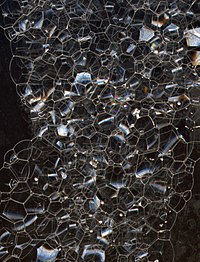
Photo from wikipedia
We propose finite-difference time-domain (FDTD) modeling suitable for healthy skin, basal cell carcinoma, dysplastic pigmentary nevus, and non-dysplastic pigmentary nevus in the frequency range of 0.25 THz to 1.05 THz.… Click to show full abstract
We propose finite-difference time-domain (FDTD) modeling suitable for healthy skin, basal cell carcinoma, dysplastic pigmentary nevus, and non-dysplastic pigmentary nevus in the frequency range of 0.25 THz to 1.05 THz. Toward this purpose, we utilize the complex-conjugate pole-residue (CCPR) dispersion model, because it is very simple to extract the accurate CCPR coefficients using the powerful vector fitting tool. In the FDTD method, it is of great importance to check the numerical stability conditions. If the coefficients extracted through the vector fitting tool do not satisfy the numerical stability conditions, the particle swarm optimization (PSO) algorithm is employed to obtain the accurate and numerically stable coefficients. Numerical examples are provided to validate our proposed FDTD modeling.
Journal Title: IEEE Access
Year Published: 2022
Link to full text (if available)
Share on Social Media: Sign Up to like & get
recommendations!